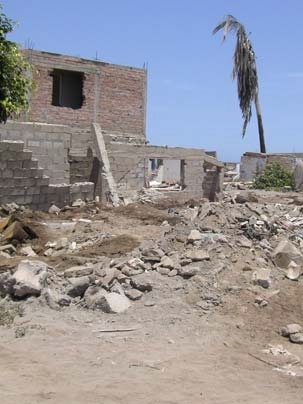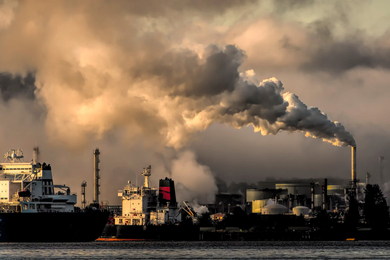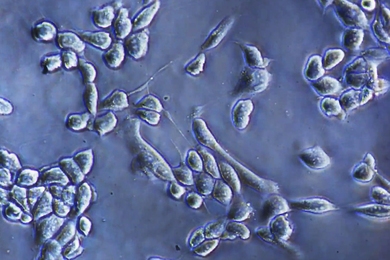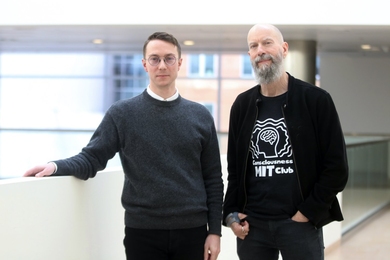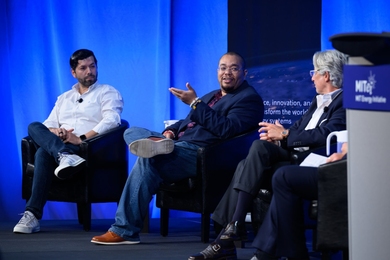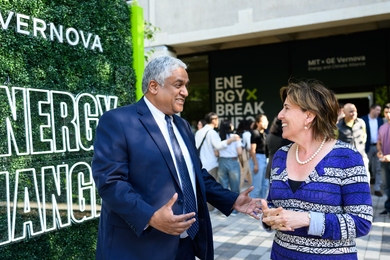Last August, Peru was shaken by a devastating magnitude 8 earthquake. In the coastal town of Tambo de Mora, not far from the epicenter, about 90 percent of the houses were damaged or destroyed by the quake and very few have yet to be rebuilt.
Students and faculty from MIT's CityScope class visited the town of 5,200 people during this year's spring break to learn about the devastated city's needs and how MIT ingenuity might be harnessed to help. They were looking at a whole range of infrastructure issues including restoring water supplies, sewerage and health-care delivery, as well as projects for rebuilding a sense of community.
At least 300 families are still living in tents on a nearby hillside, unable to return to their homes. Some houses were completely destroyed by the quake, but many others have been condemned by authorities and slated for demolition. In many cases, the owners dispute that assessment and say they want the chance to go back and make repairs.
"There are red Xs on most of the houses" signaling that they are to be demolished, said Kari Williams, a freshman in that class. "But most people are saying no, they can be repaired. It's uncertain what their fate is."
The people are still feeling devastated by their losses and many have told the local health service that they need psychological help to cope with it. But they gave the MIT class a warm reception. "They were all very friendly, very easy to talk with," Williams said.
The trip was focused on getting to know how MIT people might best be able to help out, by making it clear that "we need to know what you need, how you want to proceed," said Dorian Dargan, another freshman in the class.
As pressing as many of their needs are, the lost sense of community seems to weigh heavily. As in many Latin American towns, the central town square, or plaza, was a vibrant center of civic life where residents would socialize, sell their wares or produce, or just hang out. But the plaza's concrete paving was deeply broken and buckled by the quake and more than half a year later it remains unrepaired. When the class held a group meeting for the residents, "The first thing they said was, 'Fix that town square,'" Williams says. "It's not a pleasant place to be anymore."
Repairing the cracked concrete may not be something that the class can help with, but a variety of other needs were evident in their discussions with residents, and some graduate students from the class will be returning there this summer to carry out plans that they have been developing as a result of the on-site visit.
"There were a lot of pre-existing problems," Dargan said, which were exacerbated by the earthquake damage. "There is a significant Afro-Peruvian population who felt marginalized." Because their community was on the other side of the river from the rest of the town, and there was no working bridge, the CityScope group had a separate meeting with that community.
"We got some ideas of what they wanted," Dargan said. Now, the MIT group is working in cooperation with the Universidad del Pacifico, a few hours away in Lima, "to bring these projects to fruition."
Among the projects is developing a community garden, both in order to help meet the food needs of the impoverished town and to help built a sense of community. "They get most of their produce from other places, when they could very well be self-sufficient," he says.
Water was less of a problem than they had anticipated, as the city sits near the mouth of a river. Water quality from wells in parts of the city and surroundings, however, might benefit from improved filtration, such as the systems pioneered by MIT senior lecturer Susan Murcott, Williams says.
Another project the class is looking into is a design for a pedal-powered washing machine, which could be built locally and provide not only better hygiene but a potential new business for local people.
Williams plans to major in mechanical engineering, but says this class has already influenced her thinking about what she wants to do with her life. She's interested in product design and likes the idea of working with MIT's D-Lab on products that have real social consequences.
"After this, I'm looking at some kind of social justice track, something that can really help," she says of her experience in Peru. "It really made me want to do something positive for the Third World."
A version of this article appeared in MIT Tech Talk on April 30, 2008 (download PDF).
